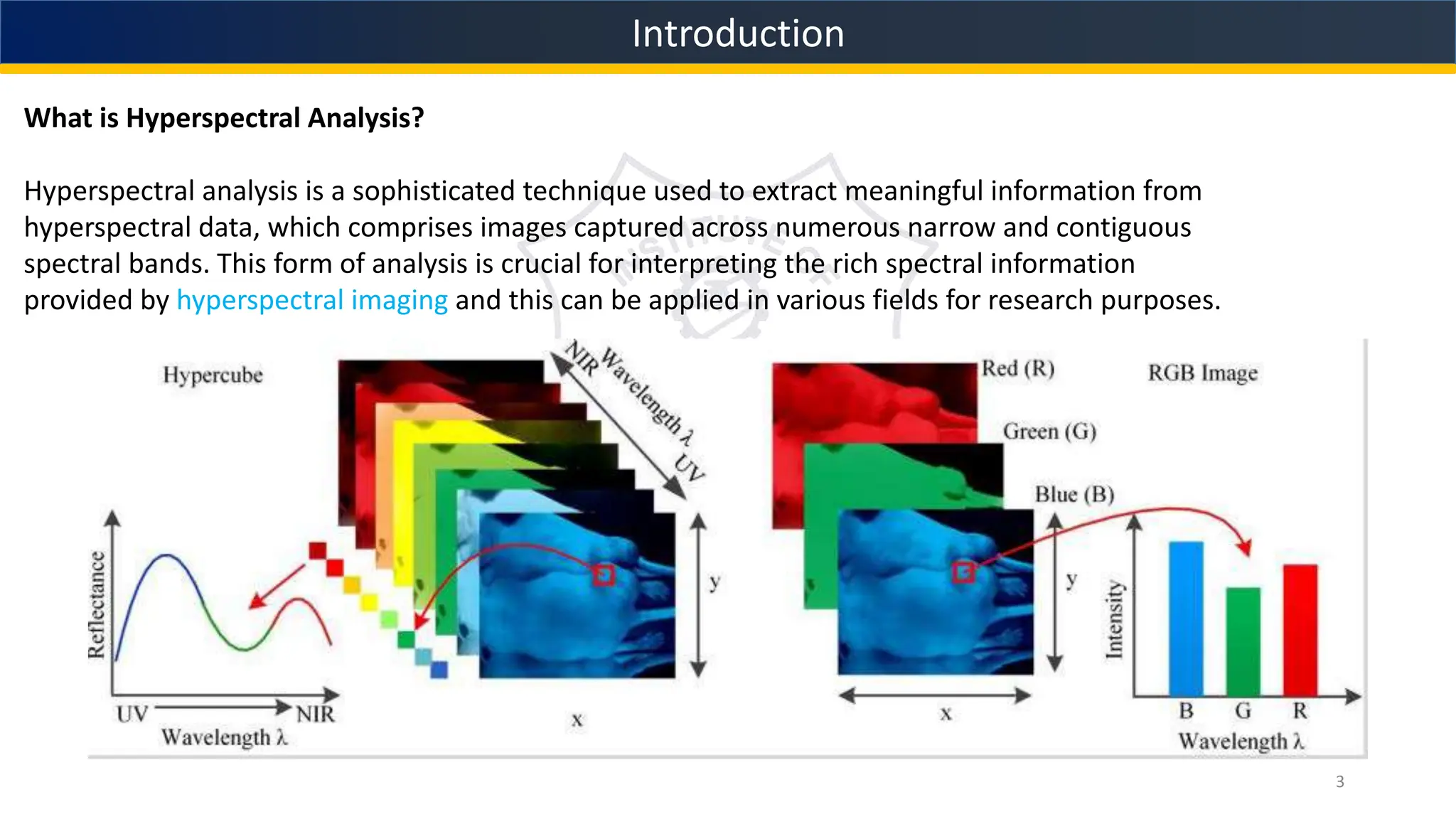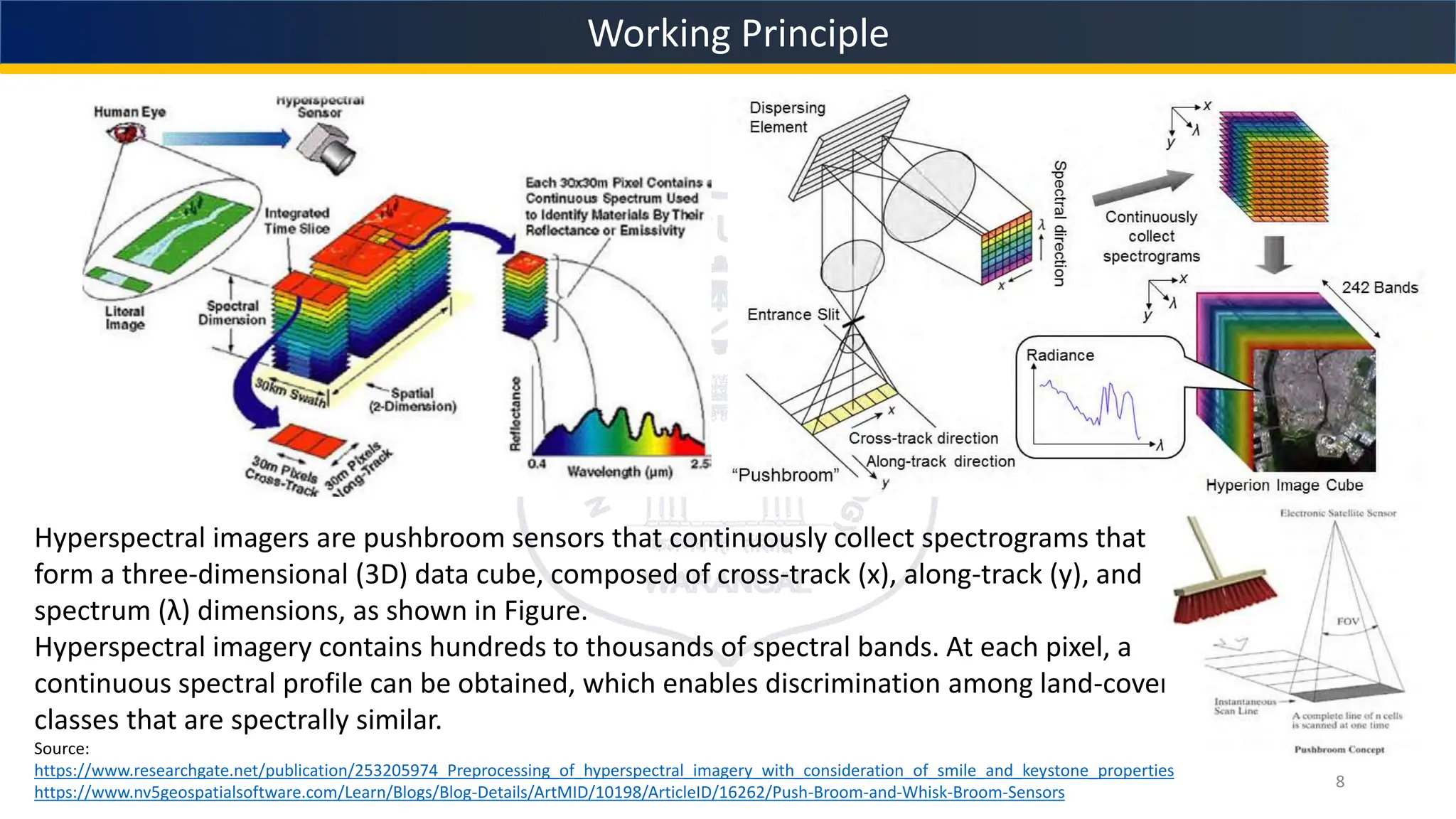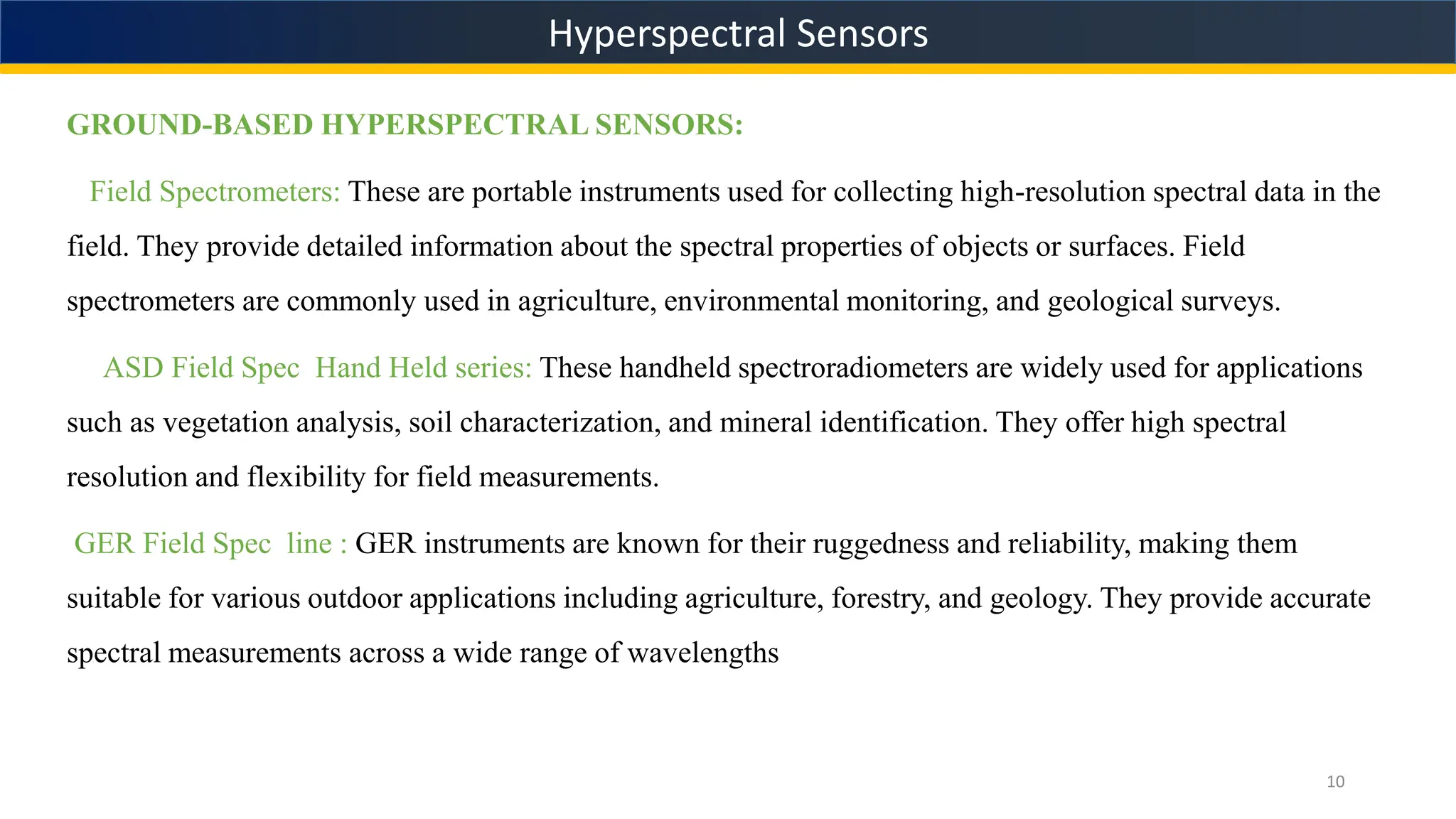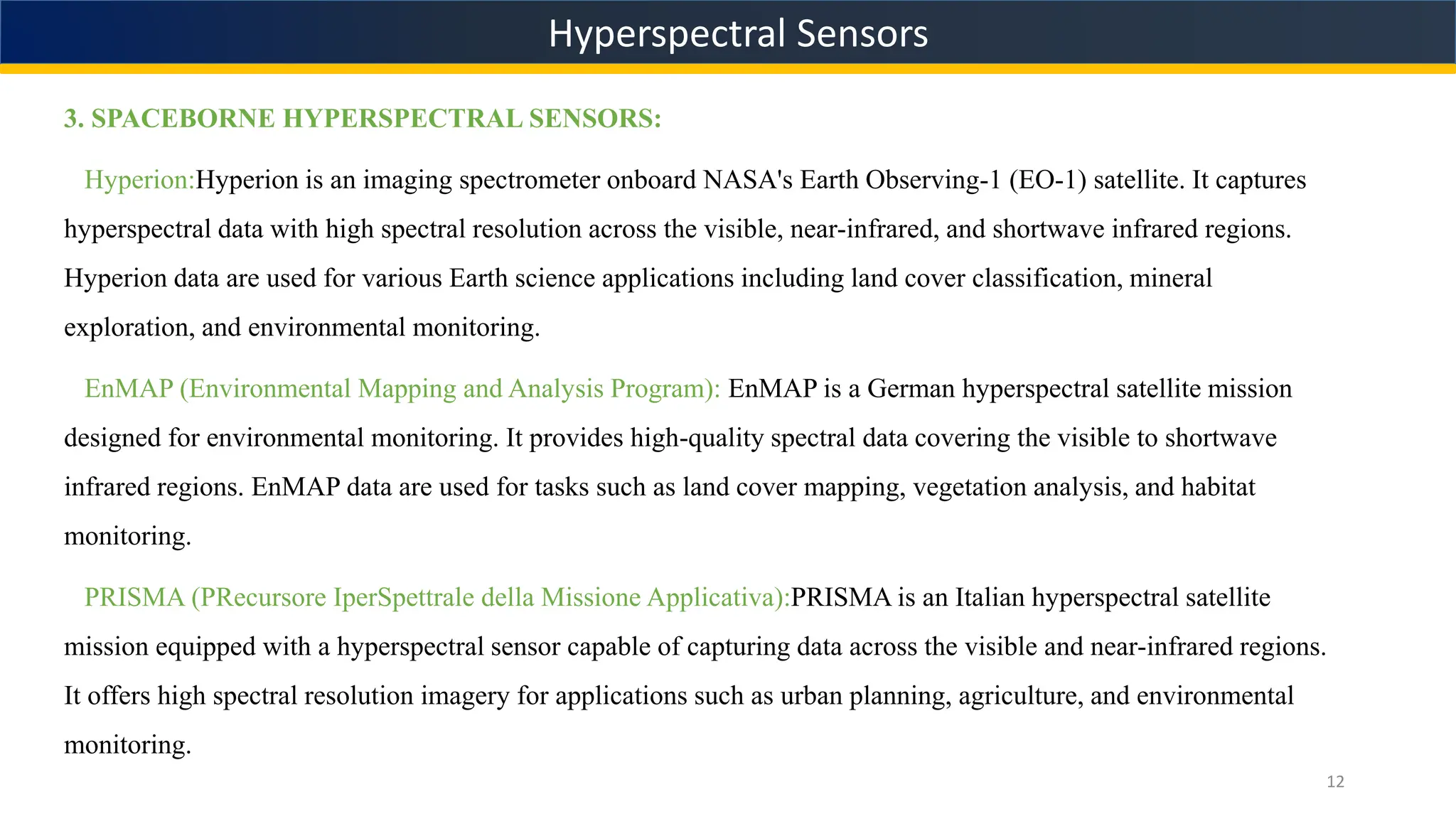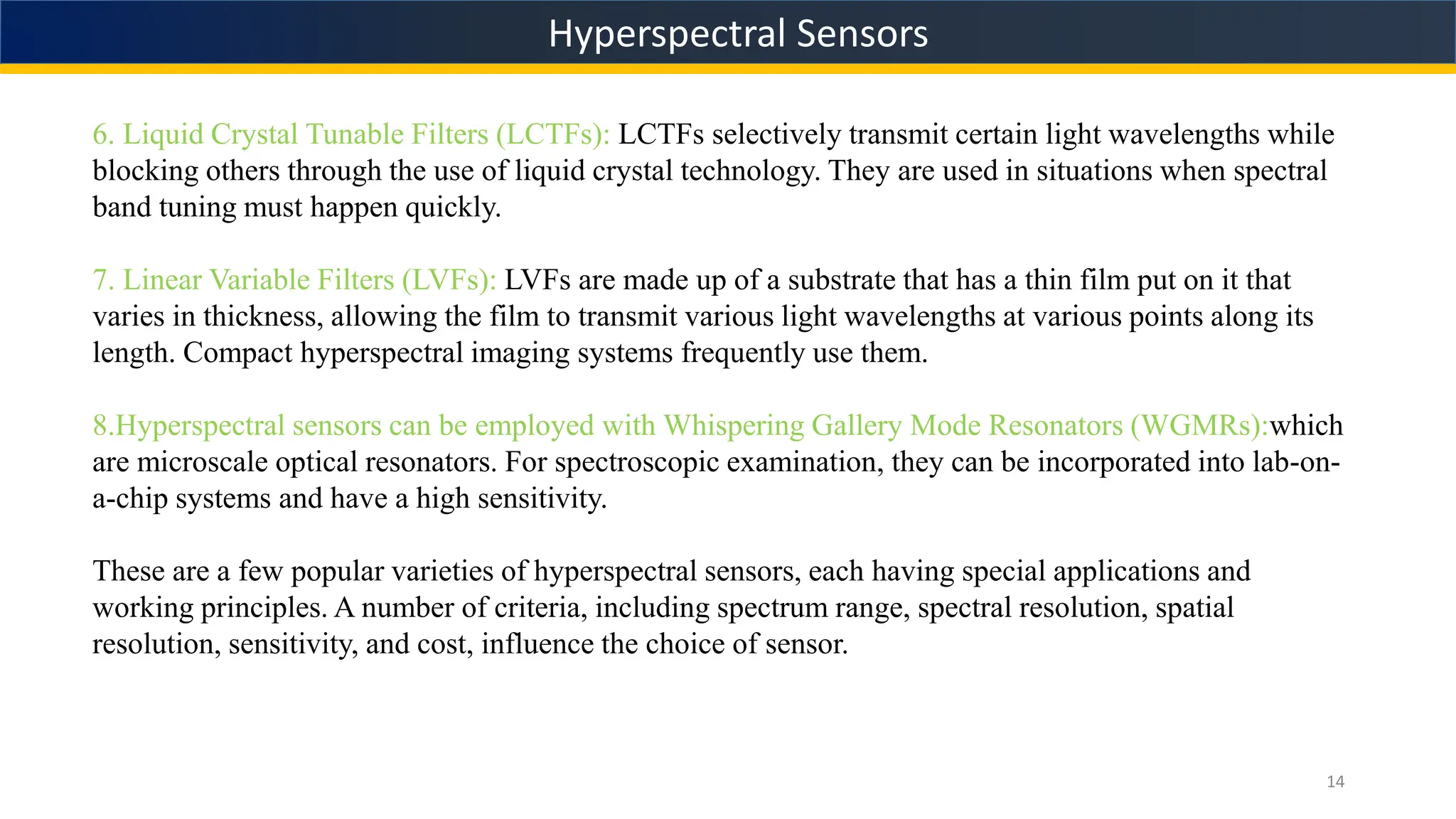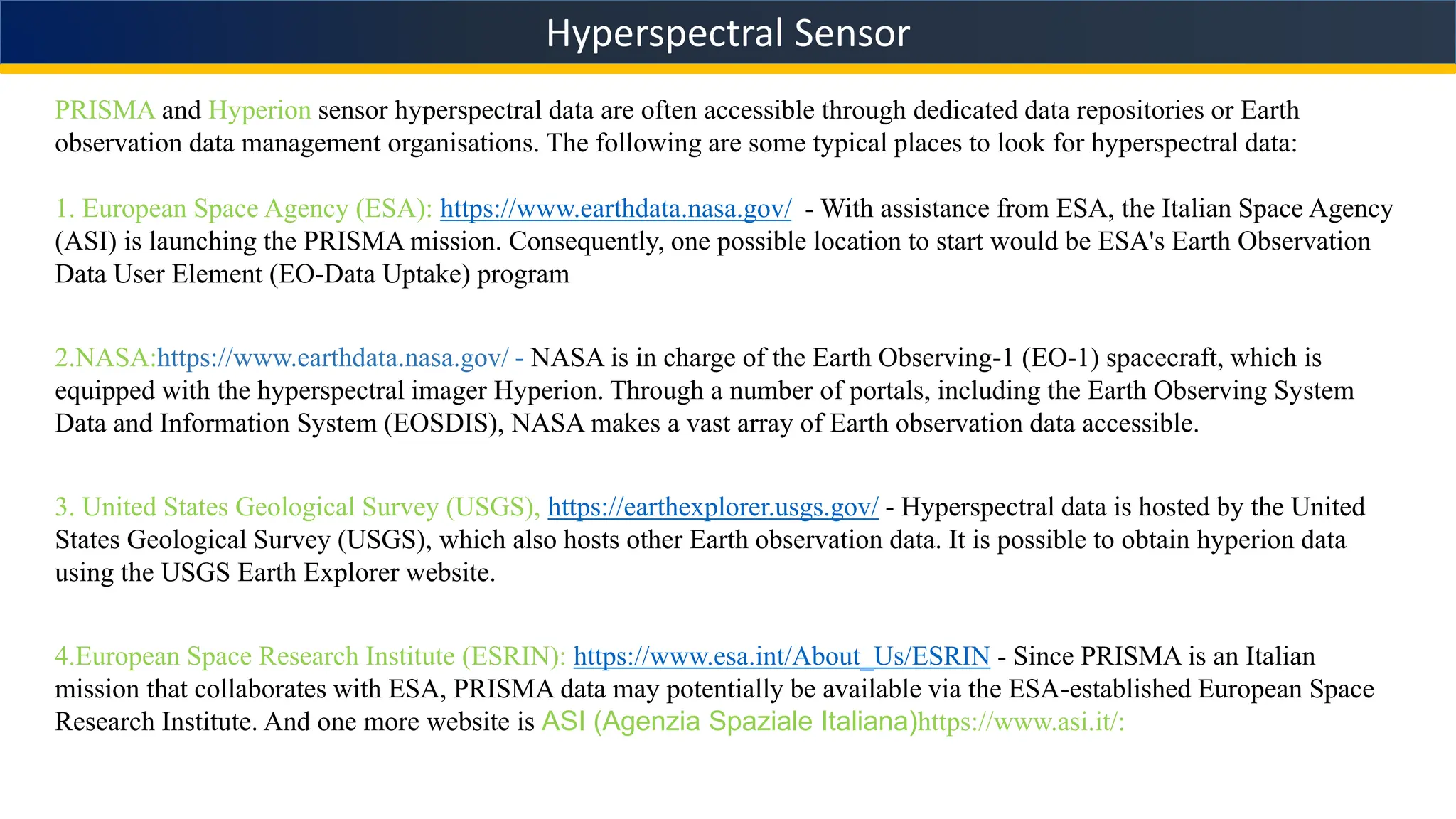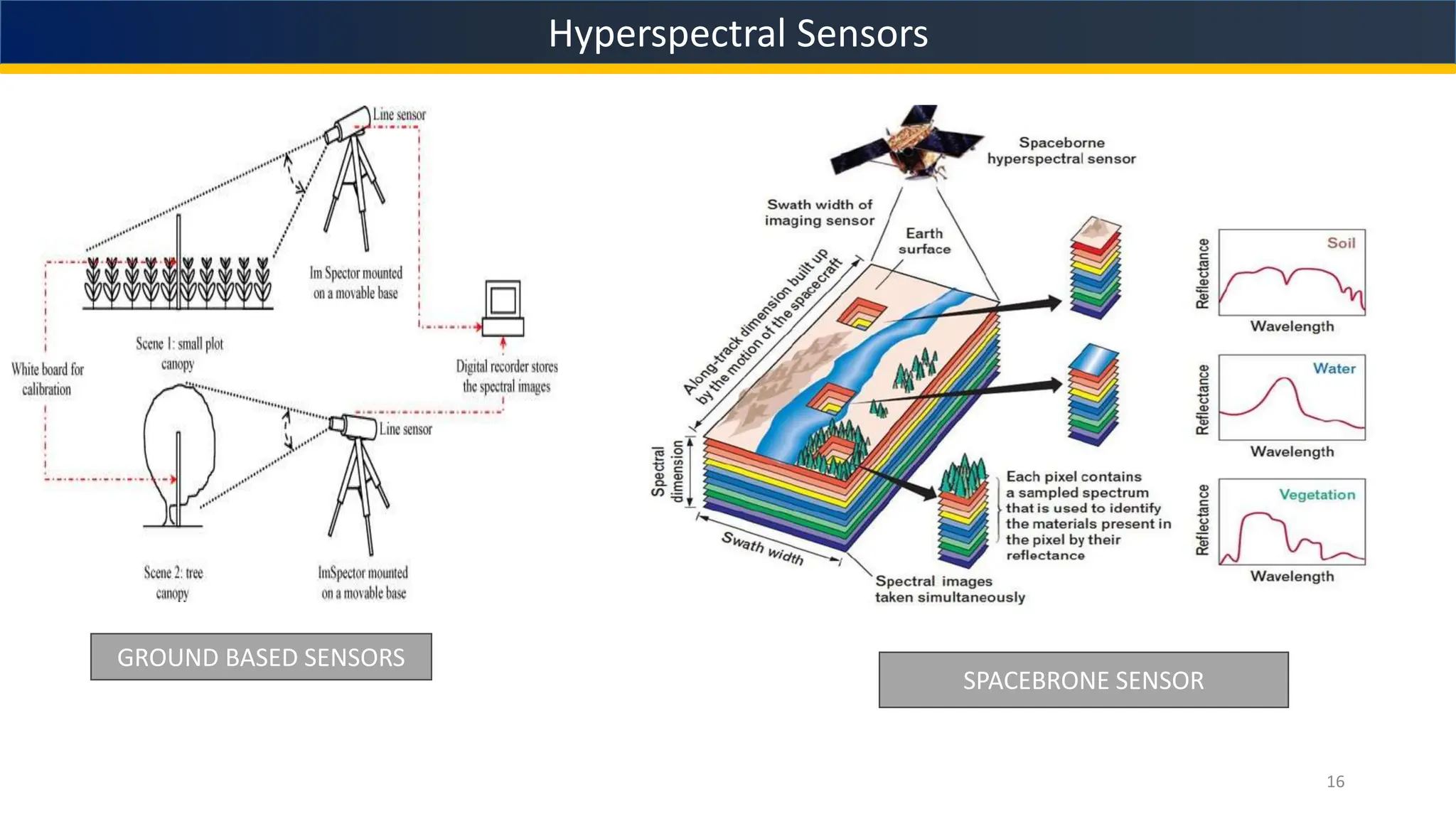This document provides an overview of a presentation on hyperspectral analysis. It discusses hyperspectral imaging techniques, sensors, applications, and includes references. The presentation was given by 4 students - Nilotpal Lahkar, Navya Bharathi, Sai Bharathi, and Vamshi Palaparthi - at the National Institute of Technology in Warangal, India in 2024-2025. The document covers the working principles of hyperspectral imaging, advantages, differences between hyperspectral, multispectral and optical sensors, examples of hyperspectral sensors including airborne and spaceborne sensors, and applications of hyperspectral analysis.


